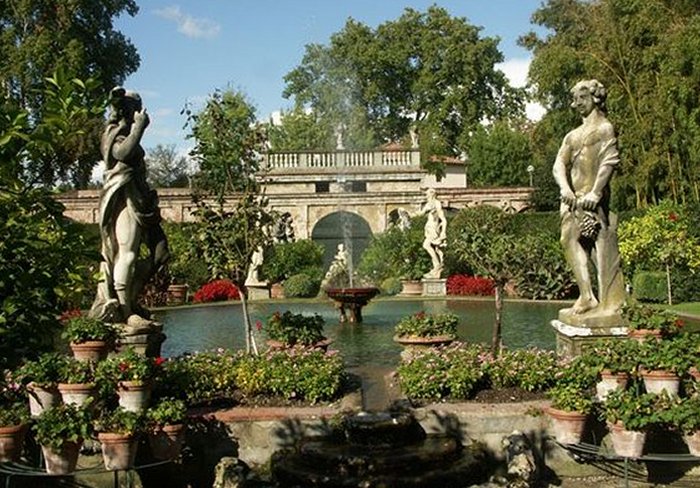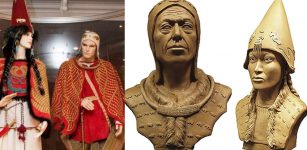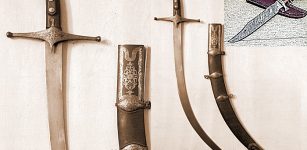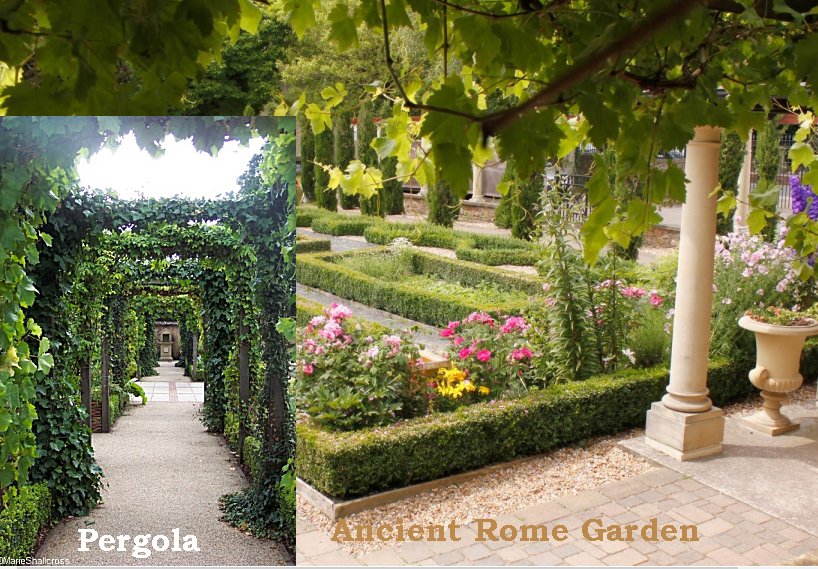How Did Ancient Romans Grow Their Gardens?
AncientPages.com - The Roman garden culture was significantly developed after 60 BC. Roman gardens were influenced by Egyptian, Persian, and Greek gardening techniques.
Each area in the garden had its special function. The owner could use his garden’s shaded path (gestation) to ride horseback or be carried by slaves.

The large gardens in the city's edge were extensive parks with pavilions, statues and spring water. Source
The gardens gave flowers for wreaths that were used at parades and religious festivals in ancient Rome.
Most gardens had a pergola, a shaded walkway, passageway, or sitting area surrounded by vertical pillars covered with growing vines.
While in China pergolas were built to provide shade in temples and living spaces, in ancient Egypt they were used to provide both shade and to house figs and grapes.
The Romans used pergolas for growing vines, which were often seen climbing many pergolas and providing a green shade especially during a romantic meal for two or a larger family.
A large and lush garden gave status and prestige to the Romans. In the shady environment, the master of the house could relax or have guests, while slaves did the hard work of cultivating the soil and taking care flowers (usually roses, violets, and oleanders) and tall trees along with a variety of dwarf trees.
The large gardens in the city's edge were extensive parks with pavilions, statues and spring water. Some even had their own zoo. Rare plants housed during travel or field trains gave special status. The garden was not only used to boast. Archaeological finds show that the Romans both ate and worked in it. The women used to weave outdoors in the shade of the trees.
See also:
Why Did Ancient Romans Build So Many Straight Roads?
Ancient Roman Women Wore Bikini In 1400 B.C.
First Pay Toilets Were Invented In Ancient Rome In 74 A.D.
Families who had houses built on small pieces of land, usually could set up miniature gardens or satisfied themselves with beautiful murals, which gave the illusion of that the house was surrounded by a lush pond.
The peasants of medieval Europe considered their gardens an important source of food and herbs to cure all sorts of diseases. In the upper class, however, the garden became a fashion phenomenon during the late Middle Ages.
Garden played an important role in people’s daily life; rich people discussed all the new tricks and tips to drive out the best vegetables and the trees that gave the most fruit.
Most excavated Roman gardens show straight paths, however, serpentine or curved paths were also designed especially in larger gardens.
Pliny (AD 23–79), a Roman author, naturalist and natural philosopher, wrote that his villa at Laurentum, on the west coast of the Italian Peninsula southwest of Rome, had only one wide path that circled around a central bed, while his stadium garden in Tuscany had several different paths. (Pliny Epistulae 2).
Copyright © AncientPages.com All rights reserved. This material may not be published, broadcast, rewritten or redistributed in whole or part without the express written permission of AncientPages.com
Expand for referencesReferences:
Katharine T. von Stackelberg, The Roman Garden: Space, Sense, and Society
Bowe P. Gardens of the Roman World
More From Ancient Pages
-
 On This Day In History: Howard Carter Discovered King Tut’s Tomb In The Valley Of The Kings – On Nov 4, 1922
News | Nov 4, 2016
On This Day In History: Howard Carter Discovered King Tut’s Tomb In The Valley Of The Kings – On Nov 4, 1922
News | Nov 4, 2016 -
 Stunning Facial Reconstruction Of ‘Siberian Tutankhamun’ And His ‘Queen’ Who Died 2,600 Years Ago
Archaeology | Jan 12, 2021
Stunning Facial Reconstruction Of ‘Siberian Tutankhamun’ And His ‘Queen’ Who Died 2,600 Years Ago
Archaeology | Jan 12, 2021 -
 Large Fresco Depicting The Procession Of The Wine God Dionysus Found In Pompeii
Archaeology | Feb 28, 2025
Large Fresco Depicting The Procession Of The Wine God Dionysus Found In Pompeii
Archaeology | Feb 28, 2025 -
 Secret High-Tech Knowledge Hidden In Ancient Manuscripts And The Mysterious Seven Sky Kings
Ancient Mysteries | Aug 24, 2021
Secret High-Tech Knowledge Hidden In Ancient Manuscripts And The Mysterious Seven Sky Kings
Ancient Mysteries | Aug 24, 2021 -
 Ancient DNA Sheds New Light On Easter Island Mystery
Archaeology | Oct 13, 2017
Ancient DNA Sheds New Light On Easter Island Mystery
Archaeology | Oct 13, 2017 -
 Gefjon: Norse Fertility Goddess Who Knew Humans’ Fates, And Plowed Away Part Of Sweden To Give It To Denmark
Featured Stories | Nov 22, 2019
Gefjon: Norse Fertility Goddess Who Knew Humans’ Fates, And Plowed Away Part Of Sweden To Give It To Denmark
Featured Stories | Nov 22, 2019 -
 5 Different Types Of Priests In Ancient Rome – Their Role And Responsibility Explained
Ancient History Facts | Jan 30, 2018
5 Different Types Of Priests In Ancient Rome – Their Role And Responsibility Explained
Ancient History Facts | Jan 30, 2018 -
 Rare, Well-Preserved Medieval Bone Flute Found In Kent
Archaeology | Nov 24, 2022
Rare, Well-Preserved Medieval Bone Flute Found In Kent
Archaeology | Nov 24, 2022 -
 On This Day In History: Coverdale Bible Printed In English For The First Time – On Oct 4, 1535
News | Oct 4, 2016
On This Day In History: Coverdale Bible Printed In English For The First Time – On Oct 4, 1535
News | Oct 4, 2016 -
 Legend Of Evil Spearfinger And The Cherokee Who Were Guided By Celestial Beings
Featured Stories | Feb 17, 2020
Legend Of Evil Spearfinger And The Cherokee Who Were Guided By Celestial Beings
Featured Stories | Feb 17, 2020 -
 Ancient Secrets Of The Damascus Steel – Legendary Metal Used By Crusaders And Other Warriors
Artifacts | May 28, 2020
Ancient Secrets Of The Damascus Steel – Legendary Metal Used By Crusaders And Other Warriors
Artifacts | May 28, 2020 -
 Krampus Celebrations Are Becoming Dangerous – Historian Warns
Ancient Traditions And Customs | Dec 10, 2019
Krampus Celebrations Are Becoming Dangerous – Historian Warns
Ancient Traditions And Customs | Dec 10, 2019 -
 A Millennium-Old Gilded Bible Seized In Tokat, Turkey
Archaeology | Oct 28, 2015
A Millennium-Old Gilded Bible Seized In Tokat, Turkey
Archaeology | Oct 28, 2015 -
 The Hittites, Mysterious People Of A Thousand Gods – Collapse Of The Hittite Empire
News | Sep 9, 2015
The Hittites, Mysterious People Of A Thousand Gods – Collapse Of The Hittite Empire
News | Sep 9, 2015 -
 Never-Before-Seen Amazon Rock Art Reveal People Lived With Giant Ice Age Animals
Archaeology | Dec 5, 2020
Never-Before-Seen Amazon Rock Art Reveal People Lived With Giant Ice Age Animals
Archaeology | Dec 5, 2020 -
 On This Day In History: The Battle Of Fulford Was Fought – On Sep 20, 1066 AD
News | Sep 20, 2015
On This Day In History: The Battle Of Fulford Was Fought – On Sep 20, 1066 AD
News | Sep 20, 2015 -
 Death And Afterlife In Sumerian Beliefs
Civilizations | May 12, 2017
Death And Afterlife In Sumerian Beliefs
Civilizations | May 12, 2017 -
 Draugr – Vikings Feared This Ugly Living Dead With Prophetic Visions
Featured Stories | May 24, 2020
Draugr – Vikings Feared This Ugly Living Dead With Prophetic Visions
Featured Stories | May 24, 2020 -
 2000-Year-Old Antikythera Mechanism – Experts Recreate A Mechanical Cosmos For The World’s First Computer
Ancient Technology | Mar 15, 2021
2000-Year-Old Antikythera Mechanism – Experts Recreate A Mechanical Cosmos For The World’s First Computer
Ancient Technology | Mar 15, 2021 -
 Hundreds Of Rock Paintings Found In Tanzania By Polish Archaeologist
Archaeology | Jul 11, 2018
Hundreds Of Rock Paintings Found In Tanzania By Polish Archaeologist
Archaeology | Jul 11, 2018

